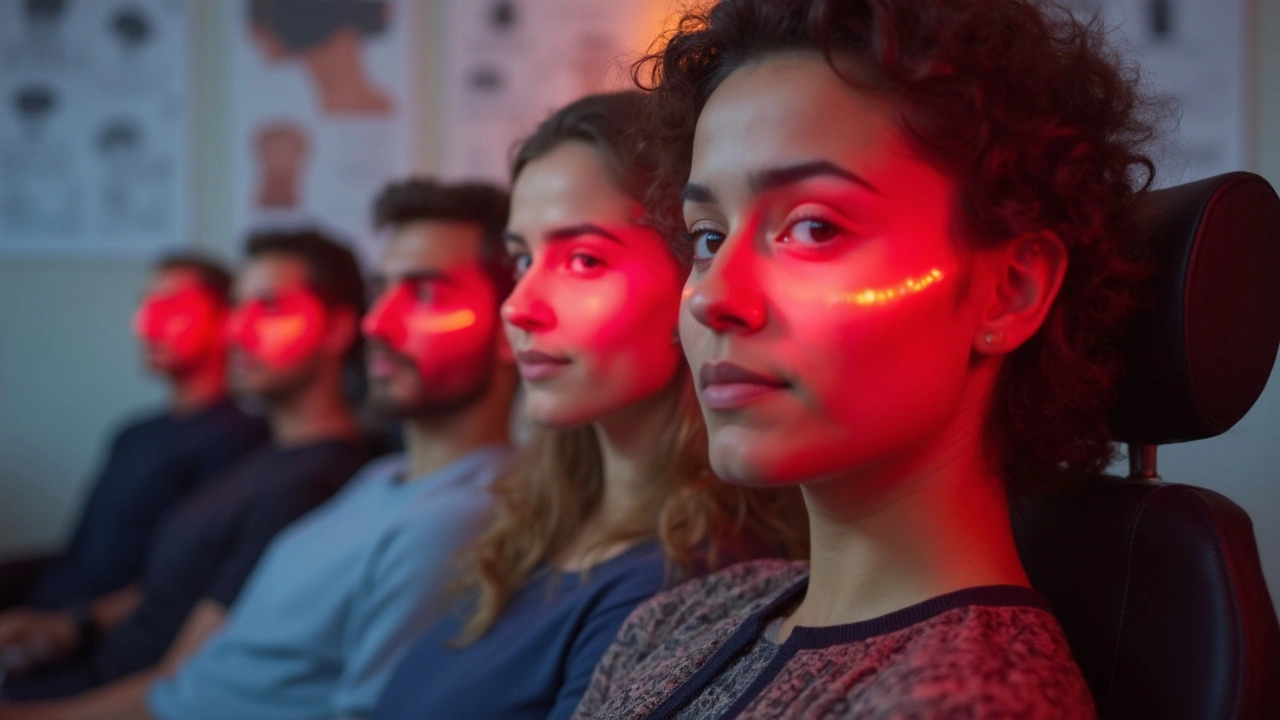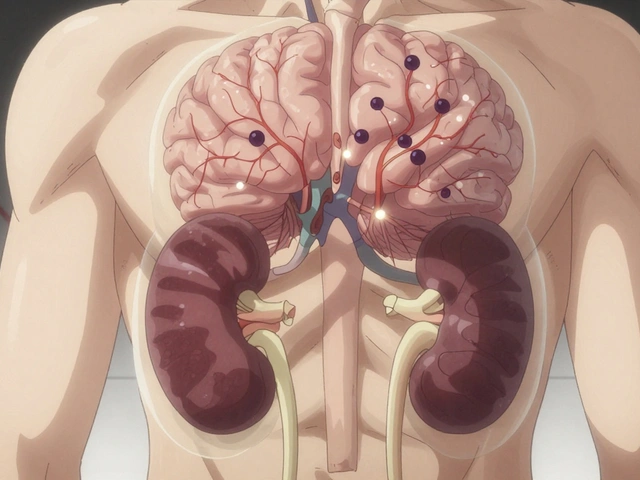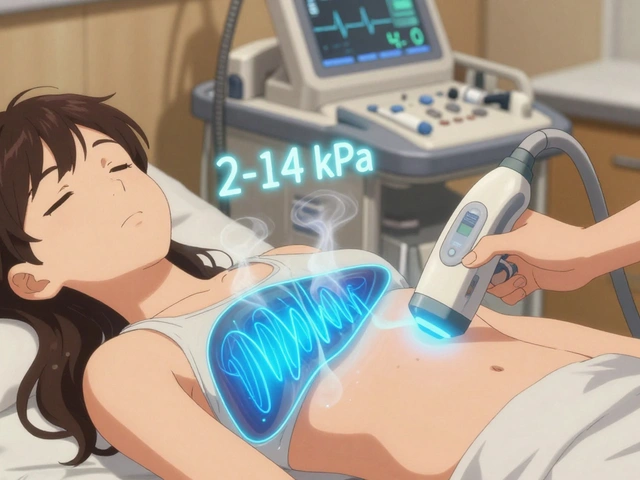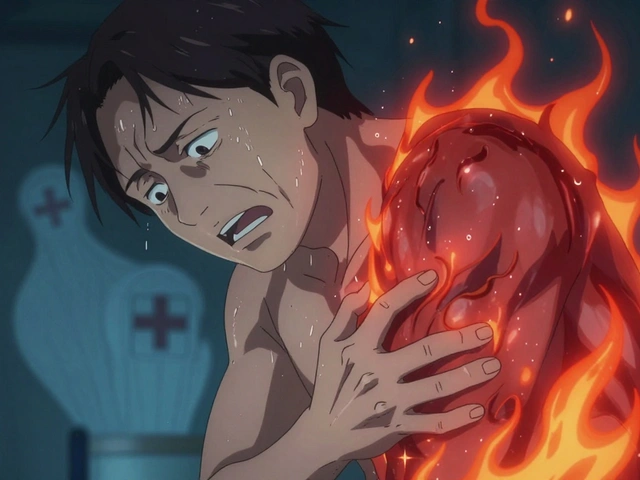Why Avoid Prescription Drugs for Hair Regrowth?
Let’s get honest—worrying about hair loss is tough. The panic you feel in the shower when you spot a clump of hair is real. Many turn to prescription drugs like finasteride or minoxidil, but side effects like mood swings, decreased libido, or even brain fog (yes, really) put plenty of people off. It makes sense to look for options that are a bit kinder on your system. Plus, everyone loves the idea of science-backed natural methods that won’t mess with your hormones.
Prescription meds often require a lifelong commitment because stopping them brings the shed right back. This can be pretty daunting. Some people also have preexisting health issues that make meds risky, or they just don’t want to depend on a pill or a topical every day. By the way, there’s an increasing number of people searching for how to maintain hair health after stopping finasteride, showing just how common these concerns really are.
Over the last decade, non-pharmaceutical hair regrowth treatments have exploded. Clinics in Oxford, London, and around the world now offer cutting-edge options that don’t require a prescription pad. The big three that everyone’s buzzing about? Microneedling, low-level laser therapy (LLLT), and platelet-rich plasma (PRP) injections. You might spot influencers chatting about these treatments on Instagram, but the real question is—do they actually work?
Let’s break down the facts and studies behind each method, plus real-world tips and what you can expect if you decide to try one yourself.
The Science Behind Microneedling: Tiny Needles, Big Promise
At first glance, stabbing your scalp tiny needles sounds a bit mad. But hear me out: microneedling isn’t new. It’s been around in skin care for years, mostly to boost collagen and fade scars. Doctors soon noticed patients started regrowing hair in the needled areas—and the research started up.
Here’s how it works: a roller or pen with super-fine needles creates hundreds of little pinpricks in your scalp. This triggers a “repair” process, releasing growth factors, ramping up collagen, and—most interestingly for us—kickstarting dormant hair follicles.
An Indian study published in 2013 had participants use weekly microneedling alongside minoxidil. They found the microneedling group had much greater hair regrowth than the group with just minoxidil. What’s super interesting is that it worked even for people who hadn’t responded to minoxidil alone before! That’s a potential game-changer for anyone feeling like their options have run out.
But microneedling isn’t just for those on medication. More recent studies show that microneedling by itself—done weekly or every other week—can gradually thicken hair and spark new growth. People usually notice the first signs (like thicker baby hairs) after two to three months. It’s not instant satisfaction, but the results can be really noticeable after five to six months.
Now, what’s the catch? Home microneedling can work, but there are some tips to do it right:
- Use a roller with needles around 1.5mm for real effect. Anything shorter is good only for skin.
- Always disinfect your roller with isopropyl alcohol before and after each use—no one wants a scalp infection.
- Be gentle. Don’t press too hard, and don’t go over sensitive or infected areas.
- Expect some redness and a little tingling for a few hours afterward. That’s normal!
For beyond-home results, professional microneedling pens go a bit deeper and are sometimes combined with growth serums or PRP for extra punch. Some clinics in the UK have waiting lists for these treatments, so you’re definitely not alone if you’re looking to book in.
Microneedling is especially good if you have androgenetic alopecia (the typical male or female pattern hair loss). If you have areas of totally smooth, scarred skin (from old injuries or certain conditions), the effect is much less dramatic. Still, for most people with gradual thinning, it’s worth paying attention to.
Tip: Don’t pick at scabs after microneedling. Let your scalp heal naturally for best results. And whatever you do, don’t use harsh shampoos right after a session.
Dr. Sharon Wong, Consultant Dermatologist at London Bridge Hospital, says, “Microneedling is one of the most promising non-pharmaceutical treatments for early hair thinning. The studies consistently show improved density, but consistency and proper hygiene are vital.”
It’s not a cure-all, but for a lot of people, it’s the safest, most natural route with real results—if you stick with it for months, not just weeks.

Low-Level Laser Therapy (LLLT): Light Up Your Roots
Low-level laser therapy (sometimes called red light therapy or cold laser) sounds like something from a sci-fi movie, but there’s solid research behind it. You’ve probably seen those red-lit laser caps, combs, or helmets online or even in high street shops in Oxford or London. But what’s going on under all those blinking lights?
LLLT uses specific wavelengths of red and near-infrared light (around 650-900 nm) to stimulate hair follicles. This isn’t about heating up your scalp or burning your hair off (don’t worry!). The theory: light energy gets absorbed by the mitochondria, the “battery packs” inside cells, and ramps up the process that leads to hair growth. Blood flow improves, inflammation drops, and follicles get a kind of wakeup call. It’s a bit like sunlight for your hair—without the sunburn.
Here’s where it gets interesting—several studies from the past five years show that regular at-home LLLT sessions (20-30 minutes, 3 to 5 times per week) can boost both hair count and thickness after about three to six months. In these trials, people who used LLLT devices consistently saw real, measurable results when compared to fake (sham) devices.
The HairMax LaserComb was actually the first LLLT device cleared by the US FDA for male and female pattern hair loss. Since then, more brands followed—iRestore, Capillus, and Theradome, to name a few.
Table: Summary of Key LLLT Studies
| Study | Participants | Duration | Results |
|---|---|---|---|
| JDJ Photomed Laser Surg, 2014 | 128 (men/women) | 24 weeks | 35-37% increase in hair count |
| Dermatol Surg, 2013 | 60 (men) | 26 weeks | Mean hair density up by 19.8 hairs/cm² |
The side effects? Practically none, unless you have a rare light sensitivity or underlying scalp condition. No weird hormonal changes, no shedding if you stop, and you can use it with other treatments if you want. For anyone avoiding medication or just not keen on daily routine, this is a huge plus.
What makes it even better is that you don’t have to go to a clinic anymore—home kits are widely available if you’re willing to make the upfront investment. Some kits aren’t cheap, but they last for years if you take care of them. Just make sure the device covers enough of your scalp. Those little combs? They’re great for small areas, but helmets save loads of time if you want coverage everywhere.
Experts recommend using devices at least 3 times weekly to see benefits. Many users notice less shedding after 2 months, and visible regrowth by 4-6 months. Keep at it, even if you’re impatient—it really pays to be patient with LLLT.
Tip: Take photos of your scalp every month. Hair regrowth is slow, and you’ll forget what you looked like at the start. Pics are motivating, I promise!
If you’re post-finasteride or minoxidil and terrified about losing gains, LLLT can be a pretty good “bridge” treatment, too—one more reason it’s worth a try for so many people.
Platelet-Rich Plasma (PRP): Your Blood, Your Growth Factor
Platelet-rich plasma (PRP) therapy didn’t start out as a hair treatment at all. At first, doctors used it for healing sports injuries, but soon realized PRP’s punch-packing growth factors could also fire up lazy hair follicles. Here in Oxford, plenty of dermatology clinics now offer PRP as a key option for hair regrowth seekers.
Here’s how it goes down: a clinician draws a small vial of your blood, spins it in a centrifuge to concentrate the platelets (these are loaded with healing goodies), and then injects the golden concentrate back into your scalp in the thinning areas. Sounds intense, but it’s usually less painful than you’d expect—especially if they use numbing cream.
The science is exciting. Platelets release growth factors like PDGF, TGF, and VEGF—these have fancy names, sure, but they help trigger the anagen (growth) phase of hair follicles. Early studies, mostly from Italy, Spain, and the US, point to real benefits. A large review in Dermatologic Surgery in 2019 looked at over a dozen clinical trials and found the majority showed substantial hair increase after three to four monthly sessions. Participants usually report hair looking thicker, and more “stubborn” patches waking up with new fuzz.
The biggest upsides to PRP:
- Since it’s all your own blood, it’s very safe—no weird allergic reactions.
- Treatments are fast, often under an hour. Back to work the same day.
- Minimal downtime—just a little scalp tenderness or swelling for 1-2 days.
Here’s a standout quote from Dr. Loraine Rigby, a renowned UK aesthetic physician:
“PRP is the most promising injectable for hair loss in the last decade. Even patients who’ve failed with other treatments often get some regrowth. As always, early intervention brings better outcomes.”
But a heads-up: not everyone responds equally. PRP seems to work best for people in early stages of androgenetic alopecia. If your scalp is super shiny, PRP has less to work with. Also, you’ll likely need maintenance treatments every 6-12 months to keep things going.
Tip: Ask your clinic about their PRP process—some use special tubes or machines that yield higher platelet concentrations. Quality really counts here!
If you’re anxious about injections, some clinics combine PRP with microneedling in the same session—double the boost, less needling all at once.

Mixing Treatments and Setting Realistic Expectations
So, if you’re reading this after spotting more scalp in the mirror than you’d like, which treatment should you start with? A growing number of specialists believe combining therapies gives you the best shot. Microneedling helps topical serums and growth factors penetrate deeper. LLLT blasts your follicles with energy, and PRP brings concentrated healing to each injection site. Used together, the sum is often greater than the parts. Some clinics even have “combination packages” that tailor the number and order of treatments based on your scalp and goals.
The big thing to remember: hair regrowth is a marathon, not a sprint. The cycle of hair growth is slow, meaning even miracle treatments take months to show their full effects. You’ll likely see the best improvement after six to twelve months, so “before and after” photos are absolutely worth it. Measure your progress along the way—there’s nothing more rewarding than seeing those new baby hairs pop up where things once looked bleak.
Day-to-day habits still count for a lot. Eat more whole grains, lean protein, and healthy fats (think salmon, nuts, eggs). Keep stress in check—seriously, anxiety is a hair killer. Gentle scalp massages, nightly silk pillowcases, and giving the dry shampoo a rest can all help too.
And don’t panic if you get a shed phase partway through—sometimes follicles kick out old, fine hairs before thicker ones grow in. If you spot temporary shedding after starting a new treatment, that’s a sign your hair is cycling faster, which usually spells good news in the long run.
Many people looking to regrow hair naturally are also curious about what happens when you stop traditional medications. If that’s you, check out this guide on how to maintain hair health after stopping finasteride for practical tips that work hand-in-hand with the natural methods covered here.
If you’re not sure where to start, or your hair loss seems fast or patchy, always book a visit with a trichologist or dermatologist before diving in. Sometimes the cause can be thyroid, iron, or another medical issue you’ll want to catch early.
Whichever route you try, do your homework, be patient, and treat your scalp with love. Science is finally catching up with what many hair loss sufferers have long suspected: the “drug-free” path absolutely has potential for real, visible regrowth—and you don’t have to go it alone.





5 Comments
Chinwendu Managwu
May 4, 2025Alright, folks, let’s talk about these so‑called "natural" hair tricks that everyone’s hyping up lately :)
First off, I’m not buying that microneedling is some miracle cure – it sounds like a manicure for your scalp.
In my backyard, we’ve always relied on good food and sturdy braids, not fancy rollers that poke holes.
The studies they quote are often funded by clinics that want you to spend more cash, so take that with a grain of salt.
Even the laser caps look like something out of a sci‑fi movie, yet they promise growth like it’s free.
Don’t forget the hidden cost of buying devices that sit on your shelf collecting dust.
And PRP? Drawing your own blood and injecting it back just sounds like a circus trick to me.
If you think a few needle pricks can replace the centuries of herbal wisdom we have in Africa, you’re being a bit naive.
Our people have used scalp massages with oils for generations, and that works far better than paying for a clinic session.
I’m not saying modern science has no merit, but the hype is disproportionate to the real results.
Most of the data shows modest improvements, not the full‑on jungle of hair you’d expect from a miracle.
So before you empty your wallet, consider a simple routine: gentle shampoo, balanced diet, and patience.
And if you still want to try one of those gadgets, at least pick a reputable brand, not some knock‑off from a garage.
Remember, the best hair growth secret is consistent care, not a quick‑fix that sounds too good to be true.
Stay skeptical, stay grounded, and maybe your hair will thank you later :)
Oh, and don’t forget to drink water-your scalp loves it as much as any laser.
Kevin Napier
May 4, 2025Sounds solid, give it a try and see! 👍
Sherine Mary
May 4, 2025The article does a decent job of summarizing the current literature, yet it glosses over the methodological limitations of many of the cited trials.
For instance, the microneedling study from India combined the device with minoxidil, making it impossible to isolate the effect of needling alone.
Moreover, most low‑level laser trials have small sample sizes and lack long‑term follow‑up, which raises questions about durability of results.
PRP protocols also vary dramatically-some clinics use a single spin, others a double spin, leading to inconsistent platelet concentrations.
Without standardization, comparing outcomes across studies becomes a statistical nightmare.
The review also neglects to mention the potential for selection bias, as participants often have early‑stage androgenetic alopecia.
Patients with advanced alopecia are less likely to benefit, a nuance that should be highlighted for realistic expectations.
While the safety profile of these modalities appears favorable, there is limited data on rare adverse events that could emerge with widespread use.
Future research would benefit from larger, randomized, placebo‑controlled designs that directly compare these therapies head‑to‑head.
Until then, clinicians should counsel patients that modest gains are possible, but the notion of a dramatic hair comeback remains unproven.
Monika Kosa
May 4, 2025I can’t help but wonder why the pharmaceutical giants are so quick to dismiss these so‑called natural methods.
It feels like a coordinated effort to keep us dependent on pricey pills while pushing secret‑tech gadgets that line their pockets.
Remember the “laser hair growth” deals that appeared right after a big merger between a med‑device company and a major drug firm?
That timing isn’t a coincidence; it’s a classic push‑pull strategy to redirect consumer attention.
Even the PRP hype started in elite clinics that were funded by venture capitalists hoping to cash in on the “bio‑hack” trend.
If you look closely, the research papers often have authors who are consultants for the very companies selling the equipment.
It’s like they’re selling us a high‑tech placebo wrapped in scientific jargon.
Don’t get me wrong, some people may see benefits, but the underlying motive is profit, not pure health.
Stay critical, and don’t let the marketing hype dictate your scalp choices.
Gail Hooks
May 4, 2025From a cultural standpoint, many societies have long embraced holistic scalp care long before any laser ever existed 🌿.
What we call “technology” is often just a modern veneer for age‑old practices like scalp massage, herbal oils, and balanced nutrition.
If we reflect on why we seek shortcuts, perhaps it’s our collective desire for quick validation in a fast‑paced world.
Patience, however, remains the most sustainable virtue in any growth journey, hair included.
Embracing both tradition and evidence‑based innovation can create a balanced path that honors heritage while respecting science ⚖️.
Ultimately, the choice rests with the individual, guided by informed curiosity rather than blind hype.
May your scalp be treated with kindness, and may your hair grow in grace 😊.